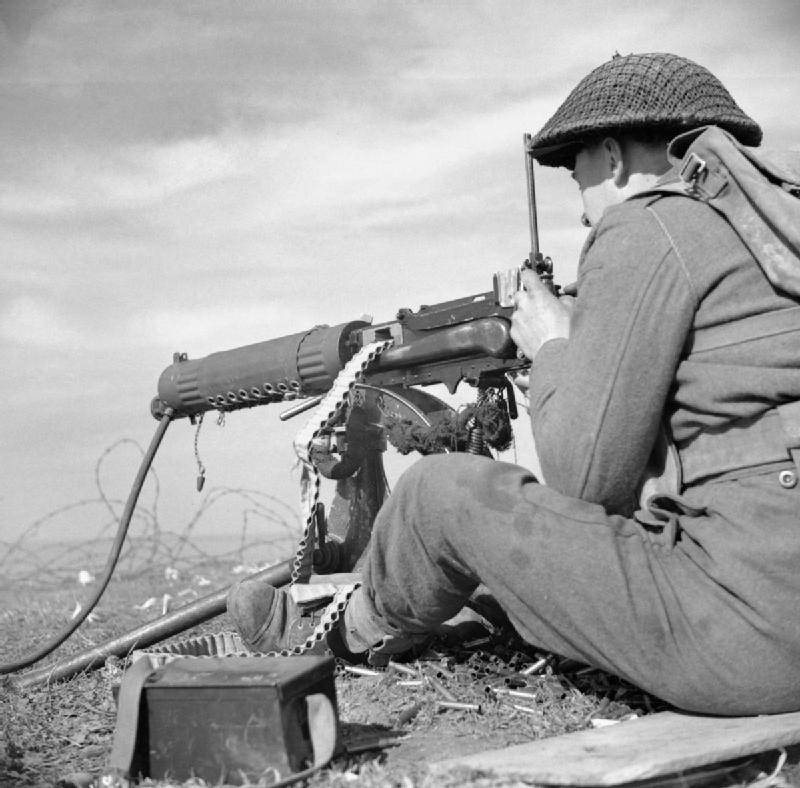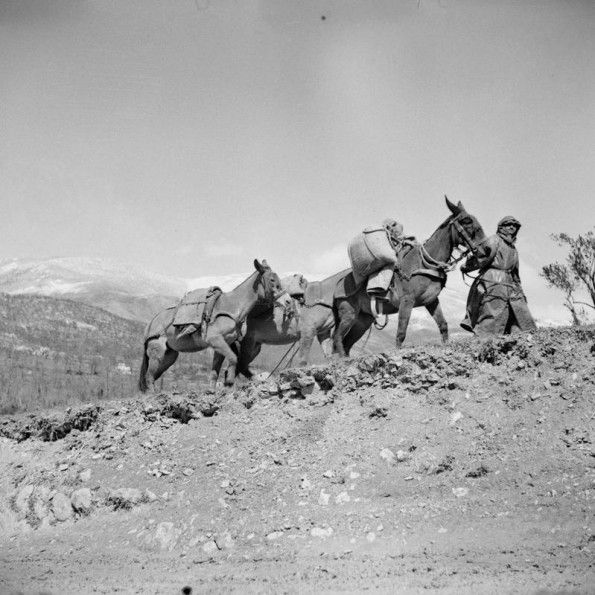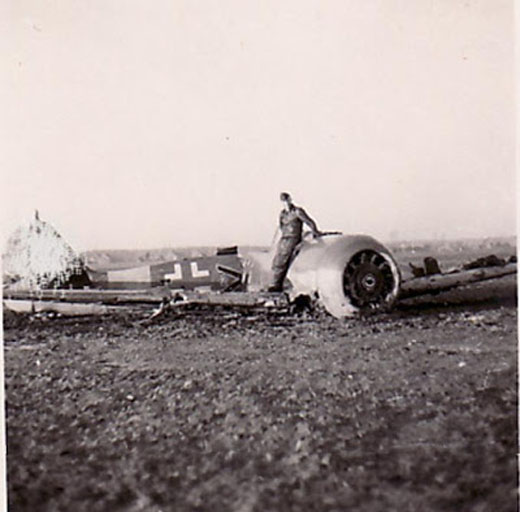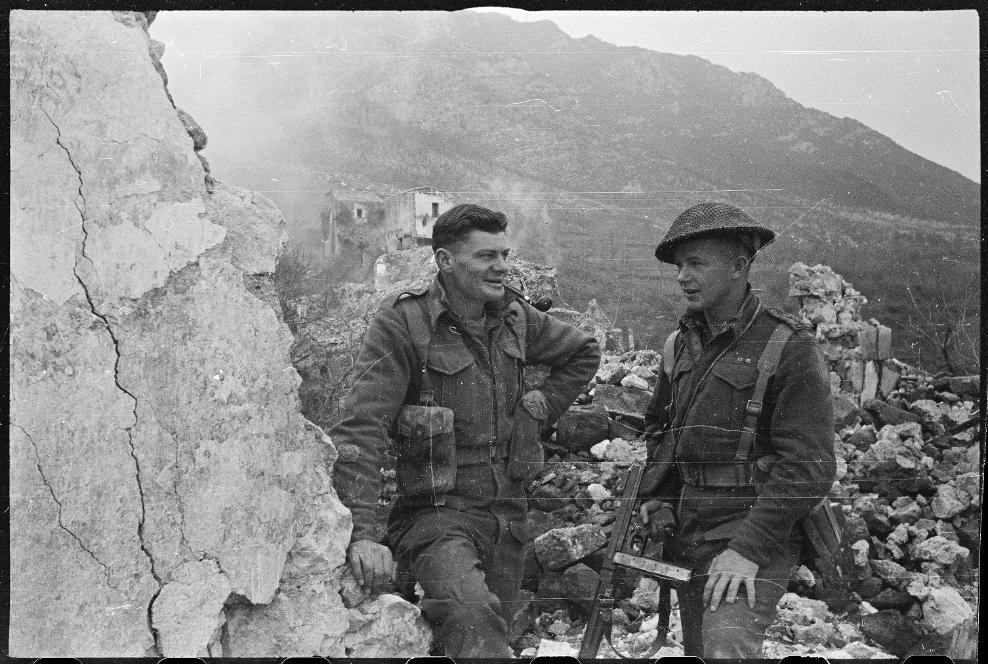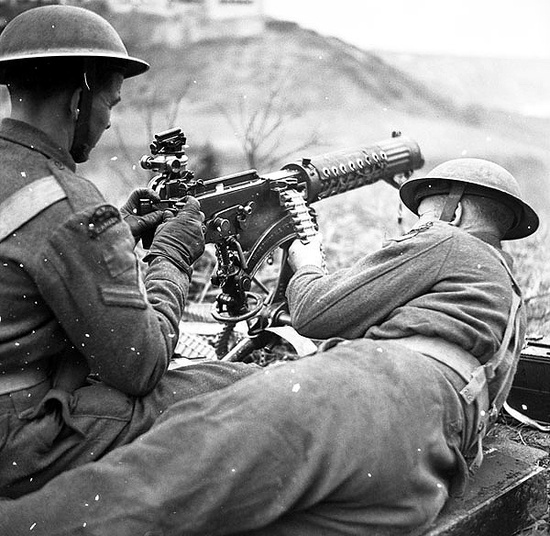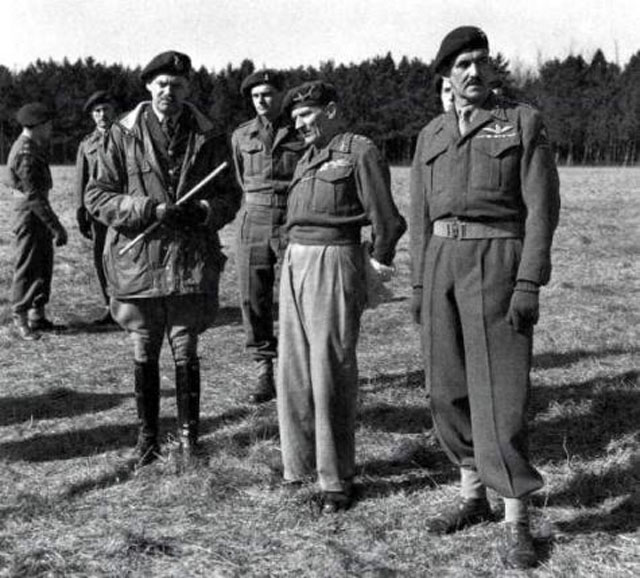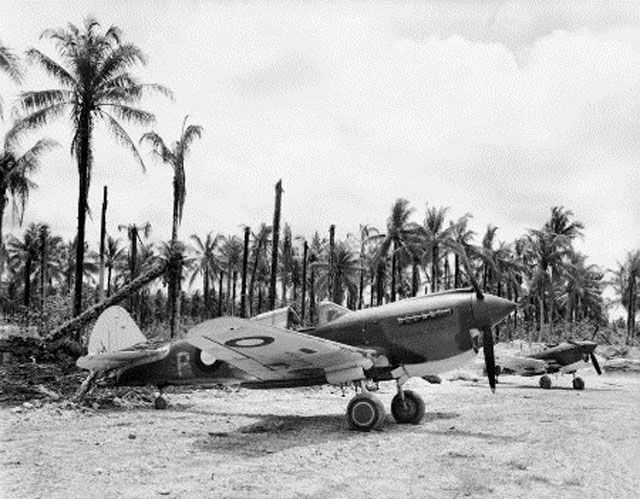Admiralty Islands
The 2nd Squadron, 7th Cavalry, secures Lombrum Plantation. The capture of Los Negros is virtually complete. The first American ships tie up in Seeadler Harbor without the Japanese guns being able to fire upon them.
[Air Operations, Bismarcks
- Although the withdrawal of many AirSols fighters from the besieged Bougainville airfields results in the availability of no escorts, XIII Bomber Command B-24s and B-25s nonetheless attack targets in the Rabaul area. Also, P-39s based at the Nissan airfield mount their first attack against Rabaul.
- US Marine ground forces occupy the Talasea airfield on New Britain.
Air Operations, Carolines
VII Bomber Command B-24s attack Kusaie and Ponape islands.
[Air Operations, CBI
BURMA- 23 No. 1 Air Commando P-51s attack the airfields at Anisakan, Onbauk, and Shwebo, where more than 30 Japanese aircraft are destroyed on the ground and 2 P-51s are downed by ground fire. In a follow-up attack, 5 No. 1 Air Commando B-25s and 2 P-51s attack the Shwebo airfield. Also, 3 10th Air Force B-25s attack bridges at Lalawng and Warazup. 16 P-51s and A-36s attack targets of opportunity between Chanmoi and Shaduzup. 9 No. 1 Air Commando B-25s attack Japanese airfields during the evening.
- A No. 1 Air Commando P-51 downs 2 Ki-43 'Oscar' fighters over the airfield at Onbauk during an afternoon mission. A No. 1 Air Commando P-51A downs an 'Oscar' fighter Ki-43 over the Anisakan airfield during an afternoon mission.
Air Operations, Europe
US heavy bombers raid Berlin again with the Erkner(Erker?) ball-bearing factory being their main target. 75 direct hit on the target are reported. 580(590?) bombers are sent but the force again loses about 10 percent(37 planes?) of its number despite an escort of 800 fighters. The raid results in the halting of ball-bearing production for some time.
US 8th AIR FORCEGERMANY:
- 320 8th Air Force B-17s and 150 B-24s attack the Berlin/Erkner aircraft-industry complex with nearly 1,000 tons of bombs, and 36 B-17s and 33 B-24s attack targets of opportunity in the Berlin area. There is a massed Luftwaffe fighter assault on the leadinb B-17 formation, the 3rd Bomb Division's 45th Combat Bomb Wind.
- 28 B-17s and 9 B-24s are lost
- Escort and support for the heavy bombers is provided by 891 USAAF fighters. VIII Fighter Command escort pilots down 77 Luftwaffe fighters and attack aircraft over German between 1230 and 1620 hours.
- 18 USAAF fighters are lost with their pilots, 16 are written off
NETHERLANDS:
- IX Bomber Command B-26s attack the Volkel and Soesterberg Airdromes in separate morning and afternoon missions, respectively.
ITALY:
- 12th Air Force B-25s attack the marshalling yard ar Orte and the rail line between Orte and Fabrica di Roma.
- 12th Air Force B-26s attack Rome's Tiburtina marshalling yard and port facilities at Porto Santo Stefano.
- XII Air Support Command A-36s attack a castle, a bridge, gun emplacements, and a road junction.
- XII Air Support Command P-40s attack gun emplacements and a road junction near Rome and strafe motor vehicles on the Appian Way.
- XII Air Support Command P-47s attack gun emplacements in the battle area.
Air Operations, Marshalls
8 G4M 'Betty' bombers evade US Marine Corps night fighters and attack Engebi Island in the Eniwetok Atoll for approximately 90 minutes beginning at 0407 hours. 1 Marine is killed on the ground, and 7 are wounded.
[Air Operations, New Guinea
- In the Admiralty Islands, V Bomber Command B-25s mount numerous low-level attacks in support of US Army ground forces completing the seizure of Los Negros Island. 17 B-24s and 11 B-25s attack targets on Manus Island and islands in Seeadler Harbor.
- More than 70 V Bomber Command B-24s, B-25s, and A-20 attack the airfields at Awar and Nubia.
- A 49th Fighter Group P-40 downs a Ki-43 'Oscar' fighter near Wewak at 1400 hours.
Air Operations, Solomons
- Japanese Army artillery destroys a XIII Bomber Command B-24 and 3 F4Us, and damages 19 other aircraft at the Piva Uncle and Piva Yoke airfields on Bougainville. Air, naval, and artillery attacks are mounted against the Japanese artillery position.
- During the day, AirSols light bombers and fighter-bombers complete 120 effective sorties against the Japanese Army artillery bomarding their bases and Japanese Army ground troops attempting to break into the Allied Bougainville perimeter. Approximately half of the 42nd Medium Bomb Group B-25s based at Stirling Airfield in the Treasury Islands also take part in attacking Japanese Army ground troops in the Empress Augusta Bay area.
Bougainville
The Japanese surprise the Americans by opening a tremendous artillery fire on the beachhead and the Piva runways, destroying 1 bomber and 3 fighters and damaging 19 more. The American bombers are immediately evacuated and transferred to New Georgia. A Japanese force of about 19,000 soldiers converges from all over the island to attack the 23,000-yard perimeter of Gen Oscar W. Griswold's XIV Corps. About 27,000 infantrymen of the Americal Division, commanded by Gen John R. Hodge, and 37th Infantry Division, commanded by Maj-Gen Robert S. Beightler, have established strong defensive positions with mines, bunkers, trenches, and barbed wire. The XIV Corps defensive position is anchored on Hill 700 (defended by the 145th Infantry Regiment, 37th Infantry Division) in the center and Hill 260 (defended by the 182nd Regiment, Americal Division) on the east side of the crescent-shaped perimeter. American field guns, supported by fire from a number of destroyers and by bombers, try to locate and silence the enemy artillery. During the night, 2 Japanese companies attack the American positions in the 37th Division's defensive sector, but are stopped..
[CBI
BURMAThe Japanese offensive U-GO begins. The aim is to destroy the British forces around Imphal and Kohima and then push on through the passes to Dimapur, cutting off the Chinese and Americans in the north, and with the road to India ahead. 3 divisions of Gen Renya Mutaguchi's 15th Army are to be employed in the initial operations. The offensive begins with advances by Gen Motoso Yanagida's 33rd Division against the positions of Gen David T. Cowan's 17th Indian Division around Tiddim. These attacks are meant to commit the British reserves so that when the main attack goes in its task will be easier.
The British are well aware that the Japanese plan to attack, but they underestimate the strength of the force to be used. The plan is for the Indian 17th and 20th Divisions, both in fairly advance positions, to fall back to around Imphal and protect and live off the large base organization there. The British forces at this stage are all from Lt-Gen Sir Geoffrey Scoones' IV Corps. It is an essential part of the Japanese plan to capture large quantities of British supplies because most of their advances are to be made over jungle tracks impassable to supply vehicles. Food is the crucial element of the problem. It is precisely because of these difficulties that the British expect a smaller attack.
In the NCAC area, Gen Stilwell orders a co-ordinated assault on the encircled enemy in the Walawbum area, but communications difficulties prevent the various units from complying. On the west, the Chinese 22nd Division is fighting near Kumnyen Ford. The 113th Regiment, Chinese 38th Division, is at Wesu Ga. The 1st Provisional Tank Group, after constructing a ford across the Nambyu Stream, enters Walawbum, but lacking infantry support pulls back to Namybu Stream for the night. Communications between Gen Stilwell and GALAHAD are restored late in the evening and Merrill is ordered to halt.
The JCS issues instructions to Gen Stilwell and Adm Mountbatten establishing command and control relationships for the B-29 strategic bombing offensive against Japane called Operation MATTERHORN. The JCS will be responsible for the direction of the 10th and 14th Air Forces, determinig targets for MATTERHORN strikes. Stilwell remains responsible for the defense of the B-29 bases in China, and Adm Mountbatten for bases in the SEAC area. The targets are Japanese urban industrial areas, shipping, and aircraft production facilities. The oil fields in Sumatra, Netherlands East Indies, are designated as secondary targets.
[Diplomatic Relations
The Finns reply to the Russian armistice terms asking for further guarantees. The principal difficulty is the Russian demand for the internment of German military personnel. This reply is rejected by the Russians on March 10.
Following secret meetings, the Finns reject the offer of a Soviet armistice on account of the harshness of Moscow's terms.
[Eastern Front
Russian forces are now within 60 miles of Rumania.
FINNISH SECTORFollowing secret negotiations, the Finns reject a proposed armistice. The terms dictated by the Soviets are too harsh to accept. However, Finland continues its surreptitious dialogue with the Soviet Union.
SOUTHERN SECTORThe 5th and 7th Guards Armies push toward Pervomaisk, throwing the 8th Army back. Novy Bug falls to Group Pliev as the flank of the 6th Army is turned.
With the Ukrainian front in tatters, Hitler declares a number of towns to be fortified places. Local commanders are made responsible for their defense but usually have only meager resources with which to carry out their assignments. Hitler mistakenly believes that enough of these fortified places can break up the Russian advance and bring it to a grinding halt.
[New Britain
As the 1st Battalion, 5th Marines, struggles forward through thick jungle and muddy ravines, the 2nd Battalion occupies Bitokara Mission after the Japanese abandon the position. The battalion pushes forward and occupies an abandoned airstrip. Patrols run into heavy resistance near Mount Schleuther.
[Pacific
- The US submarine Lapon (SS-260) attacks a Japanese convoy southeast of Hong Kong and damages the merchant cargo ship Toyokuni Maru (5792t) in the South China Sea. The merchant cargo ship Nicherei Maru takes the damaged ship in tow.
- The British submarine Sea Rover in an attack on a Japanese convoy in the Strait of Malacca sinks the transport Shobu Maru (1950t). [
Solomons
The Japanese begin attacks on the American positions on Bougainville. The airfields at Piva are shelled causing the Americans to withdraw some of their bombers. American artillery and naval vessels return the fire. Japanese infantry infiltrate the positions of 37th Division. The attacking troops are mostly from Gen Haruyoshi Hyakutake's 6th Division.
[Southwest Pacific
The US 41st Div begins to move from Australia to Cape Cretin, New Guinea, where it is to concentrate for the attack on Hollandia.
[United States, Planning
MacArthur submits his RENO IV plan to the JCS. The plan focuses on an attack on Mindanao in November 1944, followed by an attack on Luzon in January 1945.
[Images from March 8, 1944
|
|
|
|
|
|
|
|
